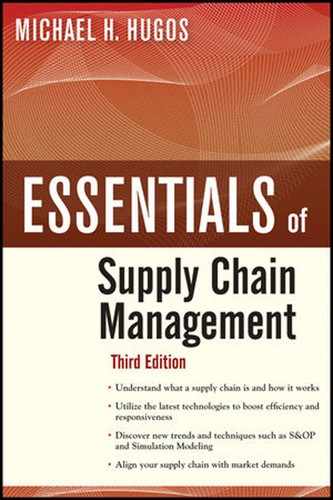![]()
Book Manifesto
This book is dedicated to the idea that there is a set of highly effective concepts and practices that supply chain professionals can use to significantly increase the competitiveness and profitability of their companies. Even though supply chains and the technology they employ are changing rapidly, these concepts and practices remain highly relevant over time—they are the essentials of supply chain management.
From decades of personal experience in the field and from many conversations and reading the works of other supply chain professionals and researchers, I have distilled out these supply chain essentials. I know you are busy and your time is valuable so I make every attempt to get to the point quickly and explain things clearly and concisely. This book provides a framework to understand the structure and operation of any supply chain. It also provides guidance in how to make effective use of the flood of new supply chain technologies, and how to operate the constantly changing real-time supply chains that support our global economy.
Supply Chains as Massively Multi-Player Online Role Playing Games
One of the most promising new technologies for designing and coordinating the operation of supply chains comes from the world of online gaming. I'm referring to a type of game called a “massively multi-player online role playing game” (MMORPG). In these online games, players from all over the globe log into virtual worlds via the Internet; they learn different roles and skill sets, and come together in self-selecting teams to carry out missions in pursuit of common goals. Question: How is this any different than the challenges that await us in the global real-time economy we now inhabit?
If you're part of the generation just starting out in business, answers to this question probably seem pretty obvious. If you're part of a generation that's already been in business for a while, answers might not seem so obvious (at first). Unfortunately, the word “game” is associated with activities that seem frivolous or unimportant. That is not what I mean here; please hold your judgement while I explain. Popular MMORPGs such as EVE-Online and World of Warcraft bring together hundreds of thousands of simultaneous online players from countries around the globe to interact in complex, realistic three dimensional worlds. What if we did the same to design, monitor and operate the global supply chains that support our real-time economy?
As a companion to this book I have collaborated with a group of people to create a massively multi-player online role playing game to use for gaining a better understanding of the dynamics that underlie supply chains and their operations. This game allows people from all over the world to collaborate in the design and operation of supply chains. In effect, the game creates one big “sandbox” where people can experiment with the effects of different supply chain designs. It can be used to model real or imaginary supply chains and simulate their operations. It will show the performance characteristics and operating costs of these supply chains under different circumstances. The purpose of this game is to engage people in an interactive experience that accelerates their learning and increases their mastery of the skills involved in supply chain management.
The ideas behind this game and its operation are explored in more detail in Chapter 7—Supply Chain Innovation for the Real-Time Economy. The game is titled “SCM Globe” and it can be accessed through my web site at www.MichaelHugos.com.
A Real-Time Supply Chain Simulation System
SCM Globe is a simulation game that provides a map of the world and on that map, people working together in supply chains can draw in their factories, warehouses, retail stores, and the transportation routes such as roads, railways, and harbors that connect those locations. Then people can define the production volumes of the factories, storage capacity of the warehouses, and movement capacity of the different modes of transportation. And finally, they can associate operating costs with each facility and each mode of transportation.
This supply chain game has some pretty challenging dynamics. Players need to figure out how to deliver products where and when they are needed to meet demand while at the same time minimizing inventory levels and holding down transportation and manufacturing costs. If you succeed in keeping down inventory levels and costs but fail to meet product demand, you lose. And if you always deliver the products but fail to keep the other factors under control, then your costs get out of hand and you don't make any money.
If supply chain professionals and researchers can literally draw supply chain designs on an electronic map display and simulate the operations of those supply chains over some time period, they will quickly learn what designs produce the best results. And in the process, they will become immersed and involved in exploring supply chain dynamics. How long would it be before the people playing such a game developed high levels of skill in designing and operating high performance supply chains that responded effectively to changing market conditions? I invite you to try this game and see for yourself. This game is an evolving work in progress and I invite your feedback. Your feedback on what you like and what additional features you would like to see will guide the enhancement of this system.
To explore this real-time supply chain simulation system (or supply chain MMO depending on how you look at it) please visit my website, www.MichaelHugos.com, and click on the link to “SCM Global.”
MICHAEL HUGOS
Chicago, IL USA
Email: [email protected]
